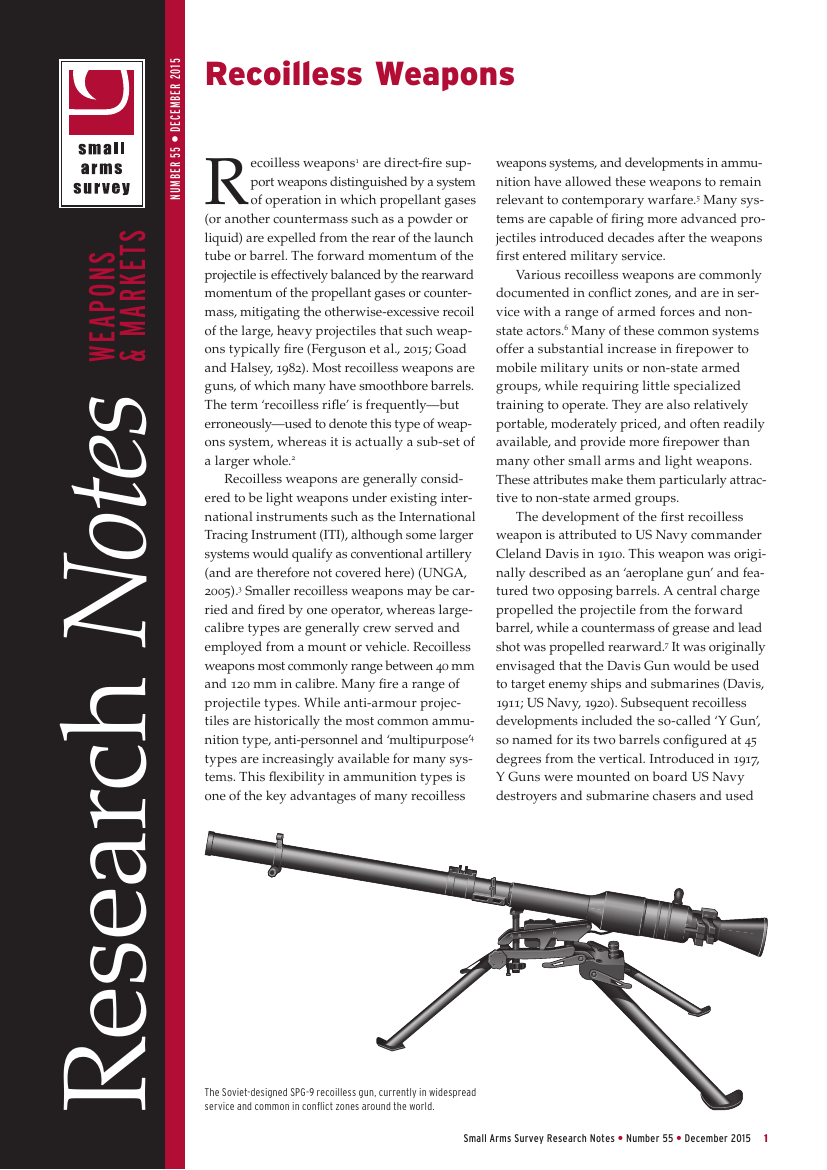
Recoilless Weapons (Research Note 55)
Recoilless Weapons—a Research Note from the Small Arms Survey—describes the technical features of this light weapon system and provides a brief history of its use and development.
Recoilless weapons are direct-fire support weapons and distinguished by their system of operation in which propellant gases (or another countermass, such as a powder or liquid) are expelled from the rear of the launch tube or barrel mitigating the otherwise excessive recoil of the large, heavy projectiles that these weapons typically fire. Smaller recoilless weapons may be carried and fired by one operator, whereas large-calibre types are generally crew-served and employed from a mount or vehicle.
Recoilless weapons are in service with a range of armed forces and non-state actors, and have been commonly documented in recent and current conflict zones such as Iraq, South Sudan, Syria, Ukraine, and Yemen. Licensed and unlicensed copies are produced in a number of countries.
Modern recoilless systems offer several advantages over the other weapons commonly employed for similar roles. They are relatively affordable, with comparatively low-cost ammunition, and are lightweight and portable. Because many recoilless weapons can fire a wide range of ammunition types, they offer a distinct tactical and logistic advantage, enabling an individual soldier to engage enemy personnel, armoured vehicles, and structures, at a variety of ranges and under different conditions of battle.
Together with other unguided weapons systems, recoilless weapons have undergone something of a resurgence following the experiences of US and coalition forces in Afghanistan and Iraq. They are a common feature of conflict zones and are likely to remain so for some time to come.
Have your say about Small Arms Survey publications and products: take 5 minutes to fill out our questionnaire.